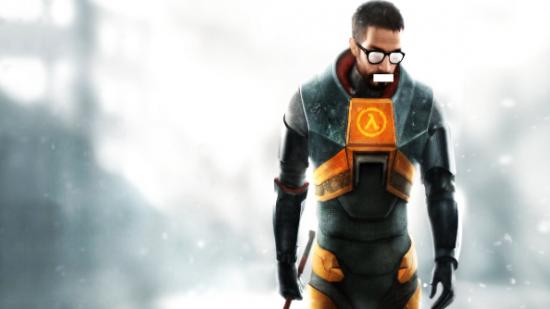“Where’s Half-Life 3?” It might be one of the most frequently asked questions put to Valve. The response is usually silence. Is it because Valve doesn’t like us? Do we smell bad? Maybe it simply means Half-Life 3 will never happen. It’s more likely got something to do with Valve’s communication philosophy: bad communication is worse than none.
At Steam Dev Days, Valve’s Robin Walker detailed the company’s approach to communication, and it makes the silence surrounding Half-Life and last year’s Diretide debacle easier to understand.
In discussions about Valve and its products, the moment a Valve employee interjects, the discussion changes. “The best feedback we get from our customers is the things they say to each other when they think we’re not there,” said Walker.
When Valve gets involved in a discussion, player expectations can change and it can come back to bite Valve in the ass later. In a discussion of Half-Life 3, for instance, a group might suggest that a neat new weapon could be a gargantuan gun that shoots out crowbars. Valve might agree, because a crowbar gun sounds rad. But when it comes to development of Half-Life 3, it might become clear that a gun that shoots out Gordon Freeman’s iconic weapon might not exactly fit in with the rest of the game, so it never happens. But people will remember that Valve once supported the idea, and they’ll be disappointed or downright angry when it doesn’t appear in the game.
If Valve didn’t get involved in the discussion in the first place, nobody would have had any expectations. “It’s really, really critical that we can change our mind,” Walker said. And that’s why bad communication can be worse than none at all.
“The best form of communication is simply to improve the product itself,” explains Walker. Improving the product doesn’t limit what Valve can do in the future, it reaches everyone, not just people who read forums and blog posts and it generates clean feedback, because Valve hasn’t tainted the discussion with interjections or spread false expectations.
But that doesn’t mean that no communication at all is desirable. Some problems can’t be fixed with an update. Walker cites the Dota report system as an example of Valve needing to communicate. There was no transparency in how the report system worked, so any discussion on the system was filled with false assumptions, making the feedback useless. “The way they thought it worked was so far afield from the way it actually worked, that even though they are having rational discussions, the assumptions the discussions were based upon resulted in us not getting good data.” So a blog post went up, detailing the inner workings of the system, and feedback improved.
If players are requesting more communication, this might be a result of a service or product failure, as was the case with the absence of the Dota event, Diretide, last Halloween. It didn’t appear (at first), Valve wasn’t talking about it, and players ended up harassing poor car manufacturer Volvo for answers. “The cause of it was fundamentally that we failed in our service,” admitted Walker.
Ultimately, it comes down to the quality of the communication said Walker. “It is far better for us to do rarer blog posts that are always 100% high value than it is to do regular posts that really would just teach our customers that most of the time when we update it’s not really that interesting.”
You can check out the entire presentation on YouTube.
